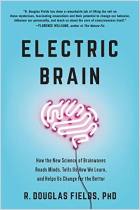
Article
Can Lab-Grown Brains Become Conscious?
A handful of experiments are raising questions about whether clumps of cells and disembodied brains could be sentient, and how scientists would know if they were.
Nature,
2020
References:
Trujillo et al. (2020)
Recommendation
How do you feel about disembodied, possibly conscious mini-brains grown from human stem cells? Would they represent a thrilling scientific advance that could be used for the good of humanity, or a sin against God and nature? Should they be used in scientific experimentation, and if so, should there be strict policies guiding their use? If you’re not sure where you land on that issue, you’re not alone. In this article from Nature, journalist Sara Reardon explores the many moral quandaries plaguing neuroethicists who are tackling this issue.
Summary
About the Author
Sara Reardon is a freelance journalist from Bozeman, Montana.
Learners who read this summary also read
Book
Article
Book
Book
Book


















Comment on this summary